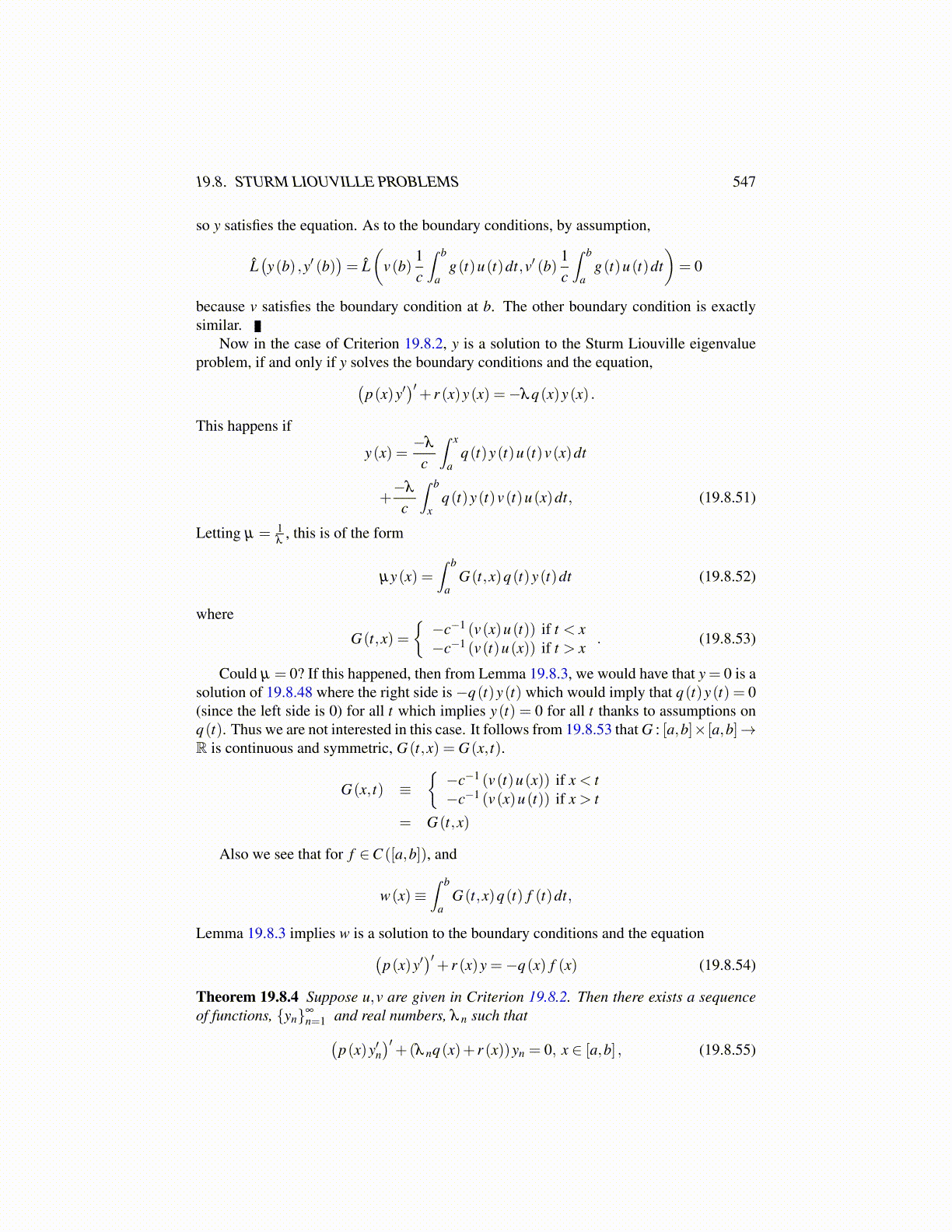
19.8. STURM LIOUVILLE PROBLEMS 547
so y satisfies the equation. As to the boundary conditions, by assumption,
L̂(y(b) ,y′ (b)
)= L̂
(v(b)
1c
∫ b
ag(t)u(t)dt,v′ (b)
1c
∫ b
ag(t)u(t)dt
)= 0
because v satisfies the boundary condition at b. The other boundary condition is exactlysimilar.
Now in the case of Criterion 19.8.2, y is a solution to the Sturm Liouville eigenvalueproblem, if and only if y solves the boundary conditions and the equation,(
p(x)y′)′+ r (x)y(x) =−λq(x)y(x) .
This happens if
y(x) =−λ
c
∫ x
aq(t)y(t)u(t)v(x)dt
+−λ
c
∫ b
xq(t)y(t)v(t)u(x)dt, (19.8.51)
Letting µ = 1λ
, this is of the form
µy(x) =∫ b
aG(t,x)q(t)y(t)dt (19.8.52)
where
G(t,x) ={−c−1 (v(x)u(t)) if t < x−c−1 (v(t)u(x)) if t > x
. (19.8.53)
Could µ = 0? If this happened, then from Lemma 19.8.3, we would have that y = 0 is asolution of 19.8.48 where the right side is −q(t)y(t) which would imply that q(t)y(t) = 0(since the left side is 0) for all t which implies y(t) = 0 for all t thanks to assumptions onq(t). Thus we are not interested in this case. It follows from 19.8.53 that G : [a,b]× [a,b]→R is continuous and symmetric, G(t,x) = G(x, t).
G(x, t) ≡{−c−1 (v(t)u(x)) if x < t−c−1 (v(x)u(t)) if x > t
= G(t,x)
Also we see that for f ∈C ([a,b]), and
w(x)≡∫ b
aG(t,x)q(t) f (t)dt,
Lemma 19.8.3 implies w is a solution to the boundary conditions and the equation(p(x)y′
)′+ r (x)y =−q(x) f (x) (19.8.54)
Theorem 19.8.4 Suppose u,v are given in Criterion 19.8.2. Then there exists a sequenceof functions, {yn}∞
n=1 and real numbers, λ n such that(p(x)y′n
)′+(λ nq(x)+ r (x))yn = 0, x ∈ [a,b] , (19.8.55)